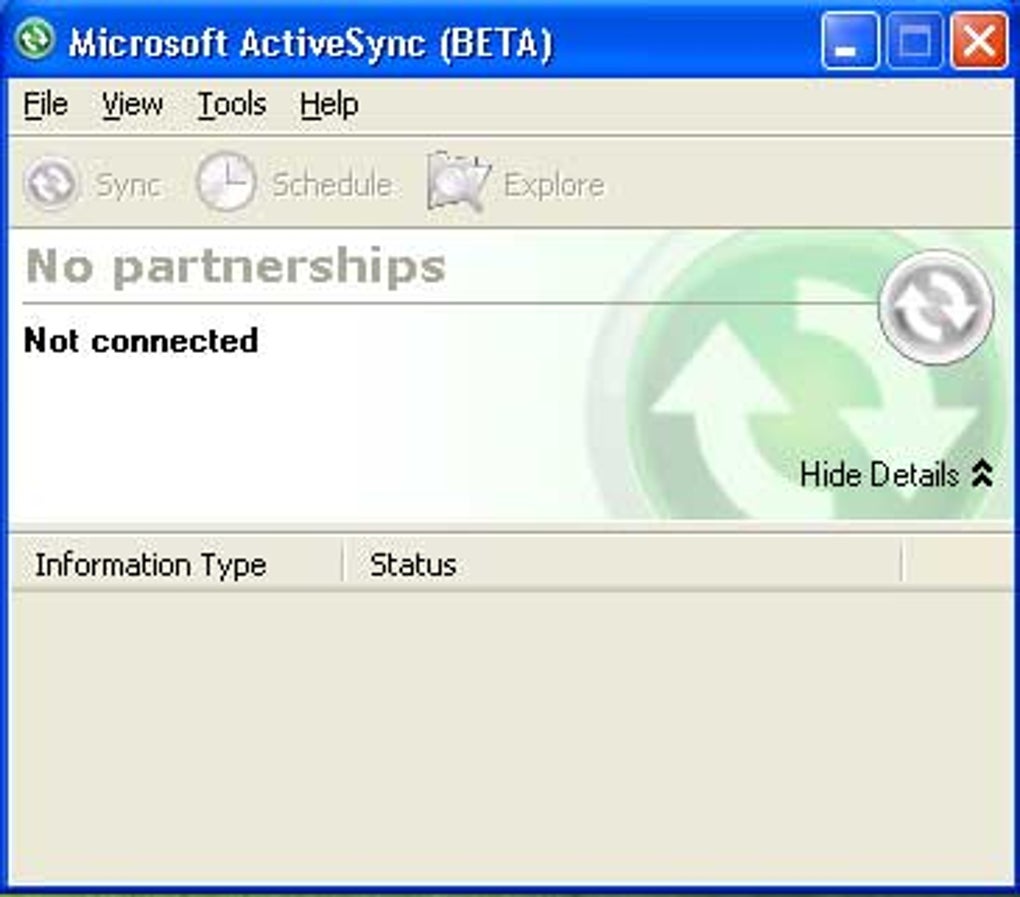Sync for Windows Upload, sync and share files and folders from your Windows desktop, laptop or tablet. Supports Windows 7, 8, 10. Using Waze inside your Ford vehicle is now easier since the much-loved, crowd-sourced navigation and traffic app is now compatible with available SYNC ® 3 AppLink. ® By accessing Waze through SYNC 3 AppLink, you can collaborate with other users, outsmarting traffic by sharing information to get the best routes, and receive real-time alerts about accidents, road hazards and traffic jams. Exchange ActiveSync is an Exchange synchronization protocol that's optimized to work together with high-latency and low-bandwidth networks. The protocol, based on HTTP and XML, lets mobile phones access an organization's information on a server that's running Microsoft Exchange. Overview of Exchange ActiveSync. When you sign in to Microsoft Edge and turn on sync, you can easily browse the web from any of your devices, keep your favorites organized, and always pick up right where you left off. For more support, check out the help for the Microsoft Edge app for iOS and Android. Sync your account on your computer 1.
| Developer(s) | Microsoft |
|---|---|
| Initial release | September 10, 1996; 24 years ago |
| Stable release | 4.5.5096 / February 13, 2007; 13 years ago |
| Operating system | Windows 9x, Windows NT 4.0, Windows 2000, Windows XP |
| Successor | Windows Mobile Device Center and Zune Software |
| Website | www.microsoft.com/windowsmobile/activesync/default.mspx |
Microsoft Active Sync Center
ActiveSync is a mobile data synchronizationapp developed by Microsoft, originally released in 1996. It synchronizes data with handheld devices and desktop computers. In the Windows Task Manager, the associated process is called wcescomm.exe.
Overview[edit]

ActiveSync allows a mobile device to be synchronized with either a desktop PC or a server running a compatible software product.
On desktops, ActiveSync synchronizes emails, calendar, contacts and tasks with Microsoft Outlook, along with Internet bookmarks and files. ActiveSync does not support all features of Outlook. For instance, contacts grouped into subfolders are not transferred. Only the contacts which are not in a subfolder are synchronized. In case of Exchange Server, only emails, calendar, contacts and tasks may be synchronized.
ActiveSync also provides for the manual transfer of files to a mobile device, along with limited backup functionality, and the ability to install and uninstall mobile device applications.

Supported mobile devices include PDAs or smartphones running Windows Mobile, Windows CE,[1] or BlackBerry 10 or iPhone but not the older BlackBerry versions, Palm OS and Symbian platforms. Windows Phone 7 doesn't support desktop ActiveSync synchronization.[2]

Starting with Windows Vista, ActiveSync has been replaced with the Windows Mobile Device Center, which is included as part of the operating system.[3]
Release history[edit]
| Version | Operating systems | Release date | Major changes |
|---|---|---|---|
| 1.0 | Windows 95 | 1996-09-10 |
|
| 1.1.7077 | 1997-03-19 |
| |
| 2.0 | Fall 1997 |
| |
| 2.1 | 1998-02 |
| |
| 2.2 | 1998-09 |
| |
| 3.0.0.9204 | 1999-08-16 |
| |
| 3.1.9386 | 1999-11-24 |
| |
| 3.1.9439 | ? |
| |
| 3.1.9587 | 2001-07-31 |
| |
| 3.5.1176 | 2001-08-06 |
| |
| 3.5.12007 | 2002-03-01 |
| |
| 3.6.2148 | 2002-11 |
| |
| 3.7.3083 | 2003-05-06 |
| |
| 3.7.1.3244 | 2003-10-10 |
| |
| 3.7.1.4034 | 2004-03-26 |
| |
| 3.8.0.5004 | 2005-01-06 |
| |
| 4.0.4343 | 2005 |
| |
| 4.0.4358 | 2005 |
| |
| 4.1.0.4841 | 2005-11-18 |
| |
| 4.2.0.4876 | 2006-06-06 |
| |
| 4.5.5096 | 2007-02-13 |
|
See also[edit]
- Software
- Devices
- Concepts
- Protocols
References[edit]
- ^'Exchange Server 2007 Support for Mobile Devices'. Microsoft Exchange portal. Microsoft. 27 March 2007. Archived from the original on 1 May 2008. Retrieved 20 November 2012.
- ^Lein, Adam Z. (17 September 2010). 'How to Sync Windows Phone 7 with Outlook'. Pocketnow. Archived from the original on 6 July 2013. Retrieved 20 November 2012.
- ^Snyder, Derek (2006). 'Windows Mobile Enterprise Features'(PDF). Mobile & Embedded DevCon 2006. Microsoft. Retrieved 20 November 2012.[dead link]
External links[edit]
Note: This topic is for the new Microsoft Edge . Get help for the legacy version of Microsoft Edge .
When you sign in to Microsoft Edge and turn on sync, you can easily browse the web from any of your devices, keep your favorites organized, and always pick up right where you left off. For more support, check out the help for the Microsoft Edge app for iOS and Android.
Microsoft Activesync App
Sync your account on your computer

1. Select the profile image in the browser taskbar.
2. Select Manage profile settings > Sync > Turn on sync. If you see an option to sign in, continue to the next step. Note: If you see Manage profile settings, you're already signed in.
3. Select Sign in and choose an account or enter your account details.Select Continue.
4. Select Sync when you're asked if you want to sync your account. This syncs your favorites, passwords, and other browsing data across the devices you use with this account. Note: If you choose to sync favorites, any tabs you previously set aside will also be synced.
5. To switch to another account, click on your profile image, then add or select another profile.
Sync your account on your mobile device
1. Download the Microsoft Edge app for iOS and Android. We'll send a download link to your phone if you enter your phone number.
2. Select an account and sign in, following the prompts.

Microsoft Activesync Download Windows 10
3. After the app is installed, select Settings and more and then select your profile image.
Microsoft Activesync Windows 10
4. Under Sync settings, tap Sync and then toggle Sync to the on position.